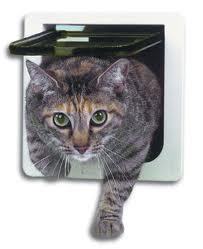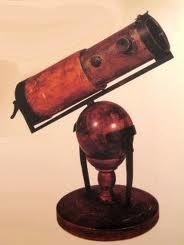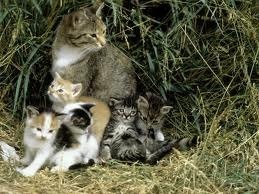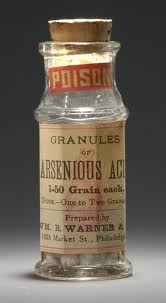Grace Elliot's Blog: 'Familiar Felines.' , page 41
September 12, 2010
A Short History of Kitty Doors.

So many people enjoyed the previous post (Sir Isaac Newton and the kitty door) that I couldnt leave the subject of cat flaps without a brief look at their history. The earliest recorded mention of a kitty door was in a medieval poem by religous writer and teacher, Hugo von Trimberg. The scourge of many a school boy, in the 1200's Von Trimberg wrote the history of 100 great latin authors. In one of his very long poems he grumbles about an Abbot, droning on interminably during a formal banquet about 'the cat window installed in the abbey gate.'
 St Peter's Cathedral, Exeter. Perhaps the oldest known cat flap is in the door of the North Tower of St Peter's Cathedral, Exeter, England. Cats were allowed to roam the grounds of this Norman cathedral to keep the rats and mice under check. Indeed on medieval scrolls there is an entry to pay wages to 'Custorbis et cato,' or 'the verger and his cat.'
St Peter's Cathedral, Exeter. Perhaps the oldest known cat flap is in the door of the North Tower of St Peter's Cathedral, Exeter, England. Cats were allowed to roam the grounds of this Norman cathedral to keep the rats and mice under check. Indeed on medieval scrolls there is an entry to pay wages to 'Custorbis et cato,' or 'the verger and his cat.' Fishing Upon Blythe Sands, Tide Setting In.
Fishing Upon Blythe Sands, Tide Setting In.J M W Turner 1775 - 1851.And finally, my favourite kitty door from history belongs to the romantic landscape painter, J M W Turner. Turner's works are now beyond price now and his painting 'The Fighting Temeraire' was voted Britain's greatest painting in a 2005 BBC poll, however he didnt always value his work. 'Fishing Upon Blythe Sands' depicts a scene facing Canvey Island in the Thames, exhibited in 1809, Turner offered it for sale to his patron Sir George Beaumont. Some time later it seems the painting ended up back in Turner's studio, perhaps to repair some minor damage, only to be treated with stunning disregard.
In the past decade, conservation work at Tate Britain, revealed that the picture had once been slashed, and there were paw prints on the back. Joyce Townsend, head conservator for the gallery, concluded the canvas had been propped up against a draughty window and then cut to provide an entrance/ exit for Turner's cats.
 'The Fighting Temeraire'
'The Fighting Temeraire' The great warship being tugged for scrappage.
Voted Britain's greatest painting in a 2005 BBC poll.
Next blog: Historical Slang - Tuesday 14th September 2010 Blog entry - Sunday 19th September 2010.Why not subscribe to this site so you dont miss any posts.
Published on September 12, 2010 08:16
September 5, 2010
Sir Isaac Newton and the Kitty Door.

17th century astronomer, alchemist, mathematician and physicist, Sir Isaac Newton was a cat lover. When he wasnt investigating the laws of gravity, describing the universal laws of motion or discovering white light was made up of rainbow colours, Sir Isaac was a bit of a softie when it came to cats. So much so that the great scientist is attributed with inventing the kitty door, or as we call it in his native England, the cat flap.
 Sir Isaac Newton - astronomer, mathematician, physicist.
Sir Isaac Newton - astronomer, mathematician, physicist.There are two versions of how this came about. The first is that Newton suffered from crippling headaches, possibly migraines, brought on by hours peering through a telescope at the stars. To recover he locked himself in a darkened room for days on end and cut a small hole in the bottom of the door through which his landlady pushed his meals. Happily, his pet cat discovered the convenience of coming and going as she pleased and adopted it as her own special door. When the queen then had kittens, fearing the hole was a little high to be comfortable for the little ones, he cut another smaller hole, slighlty lower down!
 Sir Isaac Newton's telescope.
Sir Isaac Newton's telescope.The second story was that Newton, gazing at the stars in his darkened observatory was frequently distracted by his favourite cat scratching to get in and reached the practical solution of cutting a hole in the door and veiling it with a black velvet curtain so that no stray light got in.
Whatever the explanation a fellow of Trinity College, J M F Wright, where Newton had once lived, wrote in his memoir in 1872:
'Whether this account [Newton and the kitty door] is true of false, it is indisputably true that to this day there are in the door two plugged holes of the proper sizes for the respective eggresses of cats and kittens.'
 Because cats and kittens are cute.....
Because cats and kittens are cute.....
Published on September 05, 2010 07:54
August 27, 2010
'Corpse Candles' - the scent of death.

In 1837 a new type of candle became available - the 'Composition Candle.' - Burning cleanly, but a similar cost as inferior tallow candles, they became an overnight success. So why then, did they acquire the nickname 'Corpse Candles'?They were created by a French scientist who separated tallow into two parts; one liquid, and one solid which he called 'stearine.' The stearine had a higher melting point than crude tallow and a secret ingredient prevented the candles becoming brittle. The Frenchman sold his 'secret' recipe to English manufacturers and for two years, 1835-36 they were wildly successful...until a English chemist extinguished his candle one night and smelt an alarming odour....

Mr Everitt, Professor of Chemistry noted an 'Abominable stinking smell like garlic,' the characteristic smell given off by arsenical vapours. The Westminster Medical Society investigated and confirmed the 'secret' ingredient to be arsenic; odourless while the candle burnt but released when the candle was extinguished and the wick smouldering The Society put forward a chilling scenario:
'Let us suppose London's Theatre Royal, Drury Lane were lighted with stearine candles [each chandelier held 152 tapers]...608 grains of arsenious acid would be vaporised and floating in the air during the performance.'
 Warnings against using the 'Corpse Candles' were posted in the press. However unscrupulous manufacturers with large stocks, marketed their candles as 'pure wax.' In 1837 new companies such as 'Pearl Wax Lights' guaranteed their products 'solemnly and unequivocably' arsenic free gained the public's confidence, especially when it was discovered simple chalk was just as effective at preventing brittleness. Postcript - having not learnt lessons from the past, the arsenic problem recurred in 1859...only this time the cause was a colouring - Scheele's Green (the key ingredient was arsenic), which gave a bright vibrant green colour...the fashion of the day.
Warnings against using the 'Corpse Candles' were posted in the press. However unscrupulous manufacturers with large stocks, marketed their candles as 'pure wax.' In 1837 new companies such as 'Pearl Wax Lights' guaranteed their products 'solemnly and unequivocably' arsenic free gained the public's confidence, especially when it was discovered simple chalk was just as effective at preventing brittleness. Postcript - having not learnt lessons from the past, the arsenic problem recurred in 1859...only this time the cause was a colouring - Scheele's Green (the key ingredient was arsenic), which gave a bright vibrant green colour...the fashion of the day.
Published on August 27, 2010 13:16
'Familiar Felines.'
Following on from last weeks Halloween posting, today's blog post looks at the unwanted image of cats as the witches familiar - from the Norse Goddess Freya to lonely women in the middle ages.
The full Following on from last weeks Halloween posting, today's blog post looks at the unwanted image of cats as the witches familiar - from the Norse Goddess Freya to lonely women in the middle ages.
The full post can found at:
http://graceelliot-author.blogspot.com
...more
The full Following on from last weeks Halloween posting, today's blog post looks at the unwanted image of cats as the witches familiar - from the Norse Goddess Freya to lonely women in the middle ages.
The full post can found at:
http://graceelliot-author.blogspot.com
...more
- Grace Elliot's profile
- 156 followers



